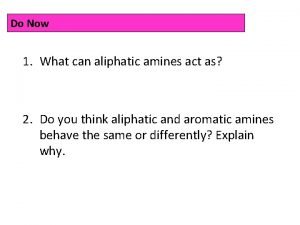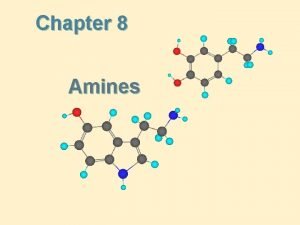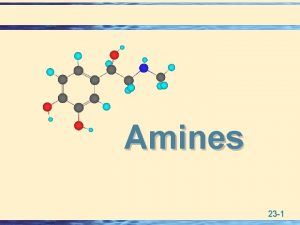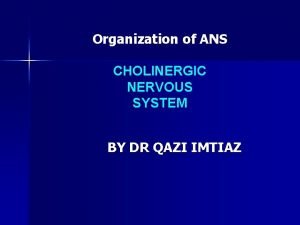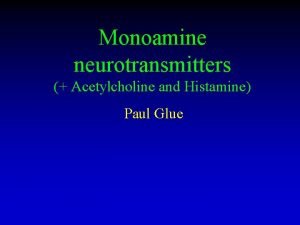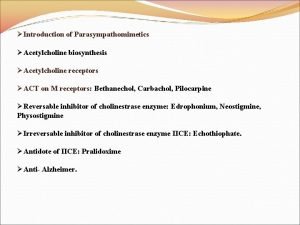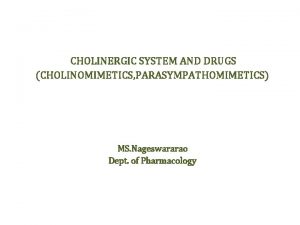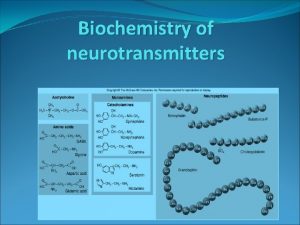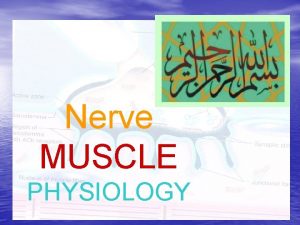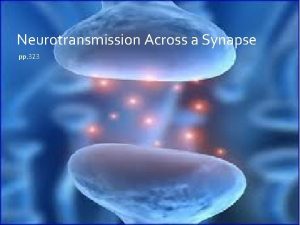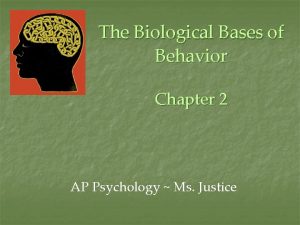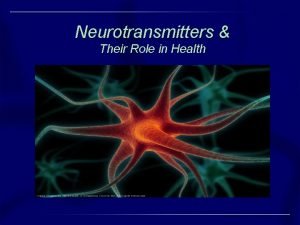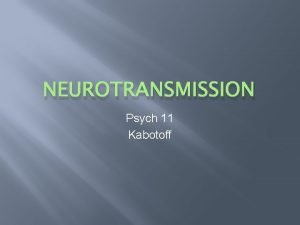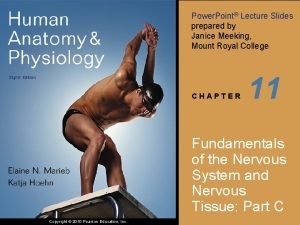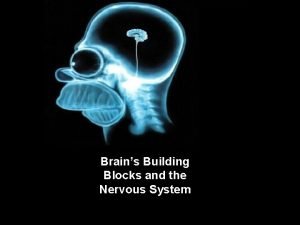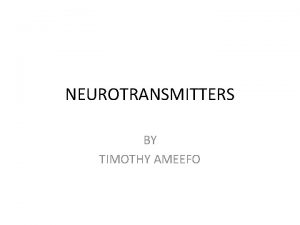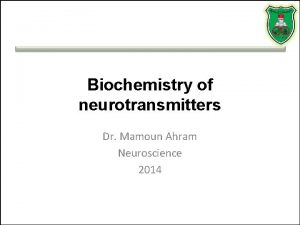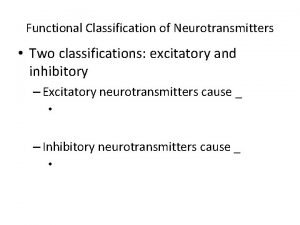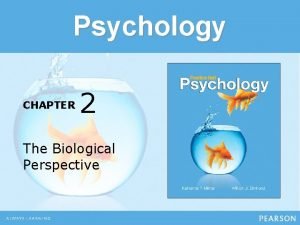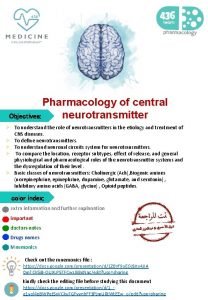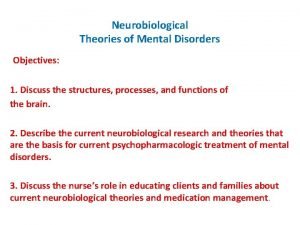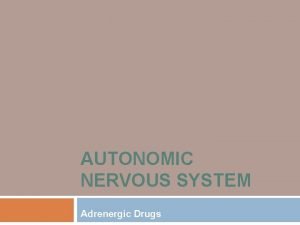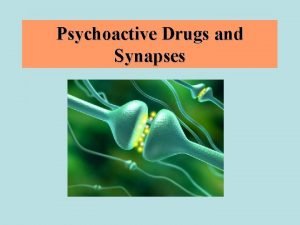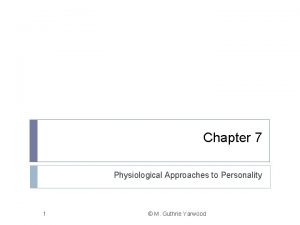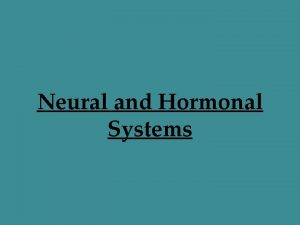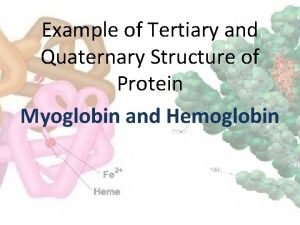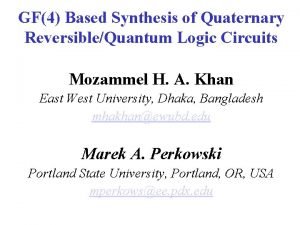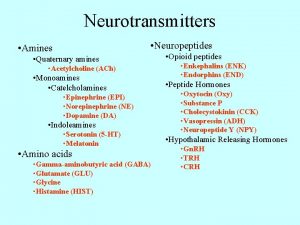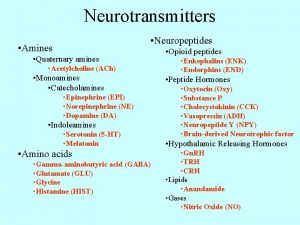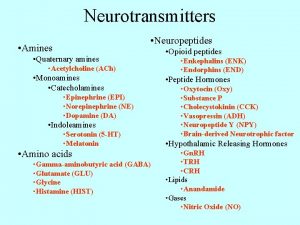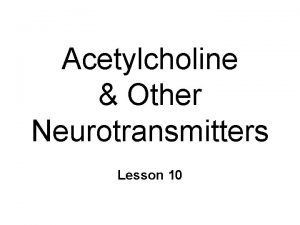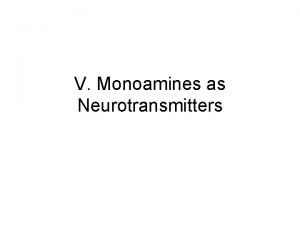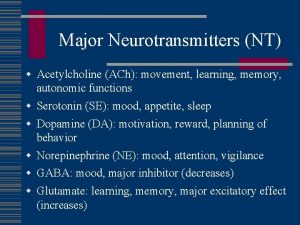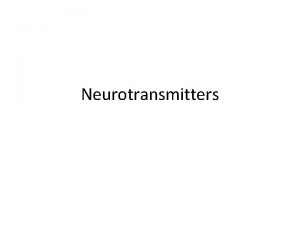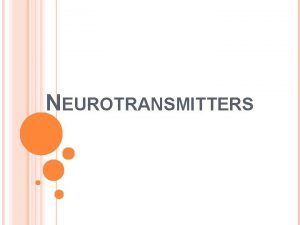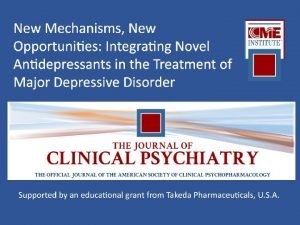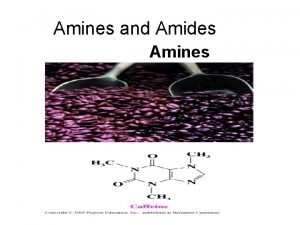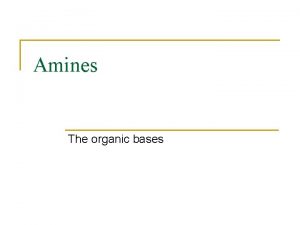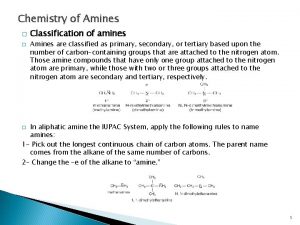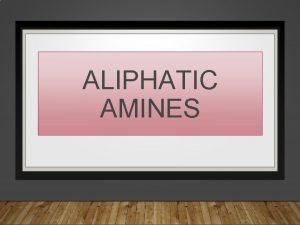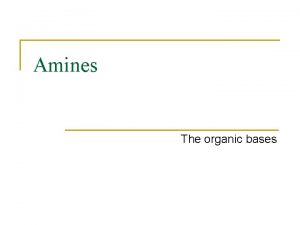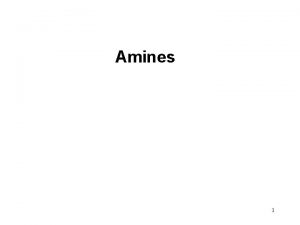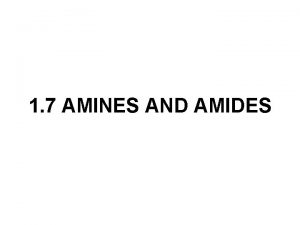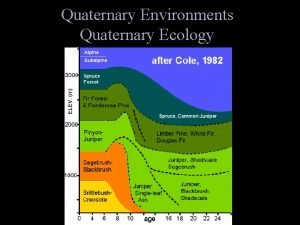Neurotransmitters Neuropeptides Amines Quaternary amines Acetylcholine ACh Monoamines




































- Slides: 36

Neurotransmitters • Neuropeptides • Amines • Quaternary amines • Acetylcholine (ACh) • Monoamines • Catecholamines • Epinephrine (EPI) • Norepinephrine (NE) • Dopamine (DA) • Indoleamines • Serotonin (5 -HT) • Melatonin • Amino acids • Gamma-aminobutyric acid (GABA) • Glutamate (GLU) • Glycine • Histamine (HIST) • Opioid peptides • Enkephalins (ENK) • Endorphins (END) • Peptide Hormones • Oxytocin (Oxy) • Substance P • Cholecystokinin (CCK) • Vasopressin (ADH) • Neuropeptide Y (NPY) • Brain-derived Neurotrophic factor • Hypothalamic Releasing Hormones • Gn. RH • TRH • CRH • Lipids • Anandamide • Gases • Nitric Oxide (NO)

Glutamate Synthesis • Glutamine • Glutaminase • Glutamic Acid • Glutamate • Aspartic Acid • Aspartate

Distribution of VGLUTs

Glutamate Synapse

Glutamate Receptors • AMPA receptors • • Kainate receptors • • Glu. K 1 -5 NMDA receptors • • Glu. A 1 -4 Glu. N 1 Glu. N 2 A-C Glu. N 3 A-B Metabotropic receptors • m. Glu. R 1 -8 Iontotropic Metabotropic AMPA Receptor

All ionotropic glutamate receptor channels conduct Na+ ions into the cell

NMDA receptor properties

Types of Memory (iconic memory) (7 bits for 30 seconds)

Cellular Mechanism for Learning Hebbian Synapse: Frequent stimulation can change the efficacy of a synapse

Enrichment Protocol Impoverished Enriched

Quantifying Dendritic Arborization

Hippocampal Brain Slicing

Hippocampal Pathways

Long-Term Potentiation (LTP) each triangle represents a single action potential Slope of the EPSP (one characteristic measure of an action potential) baseline response potentiated response Hippocampus has a three synaptic pathway Stimulate one area (mossy fibers) and record the action potentials in another (CA 1) Stimulate multiple times to get a baseline response Once a stable baseline is established give a brief high frequency stimulating pulse Use the same stimulating pulse as in baseline but now see a potentiated response This potentiated response can last hours, days, or even weeks (LTP)

Normal Synaptic Transmission Glutamate Channels: NMDA Mg 2+ block no ion flow AMPA Na+ flows in depolarizes cell

LTP Induction With repeated activation the depolarization drives the Mg 2+ plug out of the NMDA channels Ca 2+ then rushes in through the NMDA channels Ca 2+ stimulates a retrograde messenger to maintain LTP Ca 2+ also stimulates CREB to activate plasticity genes

LTP-induced Neural Changes

Neurobiological Changes via Learning Dendritic changes: • Increased dendritic arborization • Increased dendritic bulbs Synaptic changes: • More neurotransmitter release • More sensitive postsynaptic area • Larger presynaptic areas • Larger postsynaptic areas • Increased interneuron modulation • More synapses formed • Increased shifts in synaptic input Physiological changes: • Long-Term Potentiation • Long-Term Depression

Learning Requires Protein Synthesis! Anisomycin: (protein synthesis inhibitor) blocks long term memory

GABA Synthesis • Glutamate • Glutamic Acid Decarboxylase (GAD) • GABA

GABA Synapse

GABA Receptors • GABAA receptors • GABAB receptors • GABAC receptors Iontotropic Metabotropic GABAA Receptor

GABAA receptor properties

Anxiety Disorders • • • feelings of concern or worry increased muscle tension restlessness impaired concentration sleep disturbances irritability increased heart rate Increased sweating other signs of “fight-or-flight” response

Three. Component Model of Anxiety • General Anxiety Disorder (GAD) • Panic Attacks • Panic Disorder • Phobias • Social Anxiety Disorder (SAD) • Posttraumatic Stress Disorder (PTSD) • Obsessive Compulsive Disorder (OCD)

Neurobiology of Anxiety

Neurobiology of Anxiety

Neurochemistry of Anxiety • Corticotropin-releasing factor (CRF) • Norepinephrine (NE) • Serotonin (5 -HT) • Dopamine (DA) • GABA

GABA and Anxiety • Benzodiazepines (BDZ) and barbiturates cause sedation and reduced anxiety by binding to modulatory sites on the GABA receptor complex • BDZ binding sites are widely distributed in the brain. • They are in high concentration in the amygdala and frontal lobe.

GABA and Anxiety • Inverse agonists bind to BDZ sites and produce actions opposite of BDZ drugs— increased anxiety, arousal, and seizures. • The β-carboline family produces extreme anxiety and panic. They are presumed to uncouple the GABA receptors from the Cl– channels so that GABA is less effective.

GABA and Anxiety • Animal studies have found that natural differences in anxiety levels are correlated with the number of BDZ binding sites in several brain areas. • PET scans of patients with panic disorder show less benzodiazepine binding in the CNS, particularly in the frontal lobe.

Drugs for Treating Anxiety • • • Anxiolytics Sedative–hypnotics Benzodiazepines Barbiturates Antidepressants

Benzodiazepines

BDZ binding and antianxiety effect

Barbiturates

Antidepressants
 Amines chemsheets
Amines chemsheets Basicity of amines
Basicity of amines Aliphatic amines and aromatic amines
Aliphatic amines and aromatic amines Itk sisekliinik
Itk sisekliinik Ach
Ach Monoamine acetylcholine
Monoamine acetylcholine Nicotine acetylcholine receptors
Nicotine acetylcholine receptors Acetylcholine biosynthesis
Acetylcholine biosynthesis Cholinergic drugs classification
Cholinergic drugs classification Tobacco treatment specialist certification
Tobacco treatment specialist certification Acetylcholine excitatory or inhibitory
Acetylcholine excitatory or inhibitory Muscle physiology
Muscle physiology Synapse
Synapse How do neurotransmitters influence behavior
How do neurotransmitters influence behavior Serotonin deficiency
Serotonin deficiency Fun facts about neurotransmitters
Fun facts about neurotransmitters Ipsp
Ipsp How do neurotransmitters influence behavior
How do neurotransmitters influence behavior 4 neurotransmitters
4 neurotransmitters List of neurotransmitters
List of neurotransmitters Small-molecule neurotransmitters
Small-molecule neurotransmitters Functional classification of neurotransmitters
Functional classification of neurotransmitters Neurotransmitters and their functions
Neurotransmitters and their functions Inhibitory neurotransmitters
Inhibitory neurotransmitters Norepinephrine role
Norepinephrine role Acute bronchospasm
Acute bronchospasm Role of neurotransmitters
Role of neurotransmitters Neurotransmitters and drugs
Neurotransmitters and drugs Neurotransmitters and personality
Neurotransmitters and personality Somatic nervous system neurotransmitters
Somatic nervous system neurotransmitters Nerves are neural cables containing many
Nerves are neural cables containing many Reuptake of neurotransmitters
Reuptake of neurotransmitters Bisguanide
Bisguanide Quaternary structure of myoglobin
Quaternary structure of myoglobin Quaternary extinction
Quaternary extinction Secondary consumers
Secondary consumers Binary to quaternary
Binary to quaternary
